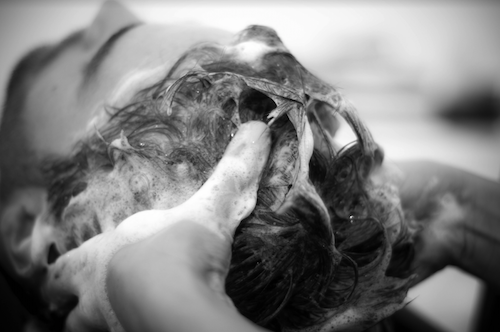Sulfates and Shampoos: Why They Should Not Mix

Pay attention to what’s in your products. Your body will thank you.
September 12, 2018
Sodium Lauryl Sulfate (SLS), a common chemical found in several shampoo brands, carries more than a thousand health hazards, and they are more severe than one might think.
SLS is a popular sulfate that acts as the foam-generator for shampoos. That lathering foam that we oh-so-love while washing our hair — that is all thanks to SLS. There’s more to it, however. More than just the gratification of soft bubbles and sweet-smelling hair. This ingredient is not exclusive to hair; because SLS is so potent and inexpensive, it is widely utilized in engine degreasers, pesticides, industrial detergents and garage floor cleaners.
On a daily basis, the average person applies more than 200 different chemicals to their skin and more than 60 percent of those applied chemicals enter that person’s bloodstream. Combine this with SLS and you may understand why the search for natural solutions is on the rise. Although SLS is considered an excellent and efficient cleanser, you probably do not want to treat your hair the same way you treat your lawn. These chemicals will rob your hair of moisture, leaving it stiff, dry and unprotected.
In a study performed by the National Center for Biotechnology Information, this unique and powerful substance was discovered to work through a chemical reaction in which they bind to the sebum, the oil on our scalp, at one end of the molecule and with water on the other. When rinsing out the shampoo, the substance washes an excessive amount of the hair’s natural oils down the drain. In turn, these chemicals pollute the groundwater and leave hair parched. The chemical is so harsh that it not only strips moisture from hair but makes it brittle and frizzy — especially for people with color-treated hair. Using SLS products is not lethal, but with the severity of its impacts, it should absolutely be avoided.
SLS is also found in other personal hygiene products such as toothpaste, bath soap, mouthwash and cosmetics (hence the foamy residue from these products). It is the reason why juice tastes so bad after you brush your teeth. According to the National Institute for Occupational Safety and Health, the cleaning agent can have a harmful impact on the kidney, liver and central nervous system in the human body. In some cases — particularly those where SLS comes directly in contact with the skin — people have experienced swelling of the arms, face or hands, eye redness and skin rashes. For those with sensitive skin, it is possible to get an allergic reaction if inhaled or overexposed to the chemical. With all that said, it is reasonable to assume that SLS is not the most innocuous ingredient out there.
Though many shampoos claim they are “natural” or “organic,” a lot of them still include harmful ingredients. The Environmental Working Ground warns that SLS — as nondescript as the name already sounds — may be listed under different names, such as sulfuric acid, monododecyl ester, sodium dodecyl sulfate, aquarex methyl and more than 150 others. The good news is that although it may take time to heal chemical damage within the hair, the hazards can be eliminated simply by using natural and safe SLS-free products. It will not be easy to avoid SLS, though; the chemical is so low-cost that hair care companies lunge at the opportunity to obtain as much as possible. That means those cheap shampoos you see in the pharmacy are probably SLS-ridden.
Whether or not you continue to use the same shampoo that may or may not have SLS mixed in, it is necessary to keep mind of what you put in your hair. The lower prices of those leading name-brand shampoos may not stop you from buying them. After all, we are college students on a budget. However, in the case that you have a few more dollars to spend while shopping for personal hygiene products, be sure to look for the “SLS-Free” label, and examine the ingredients on the back of the container. Alternatively, an even safer idea would be to make your own shampoo so that you know what’s going in your hair.
Bottom line: pay attention to what’s in your products. Your body will thank you later.











